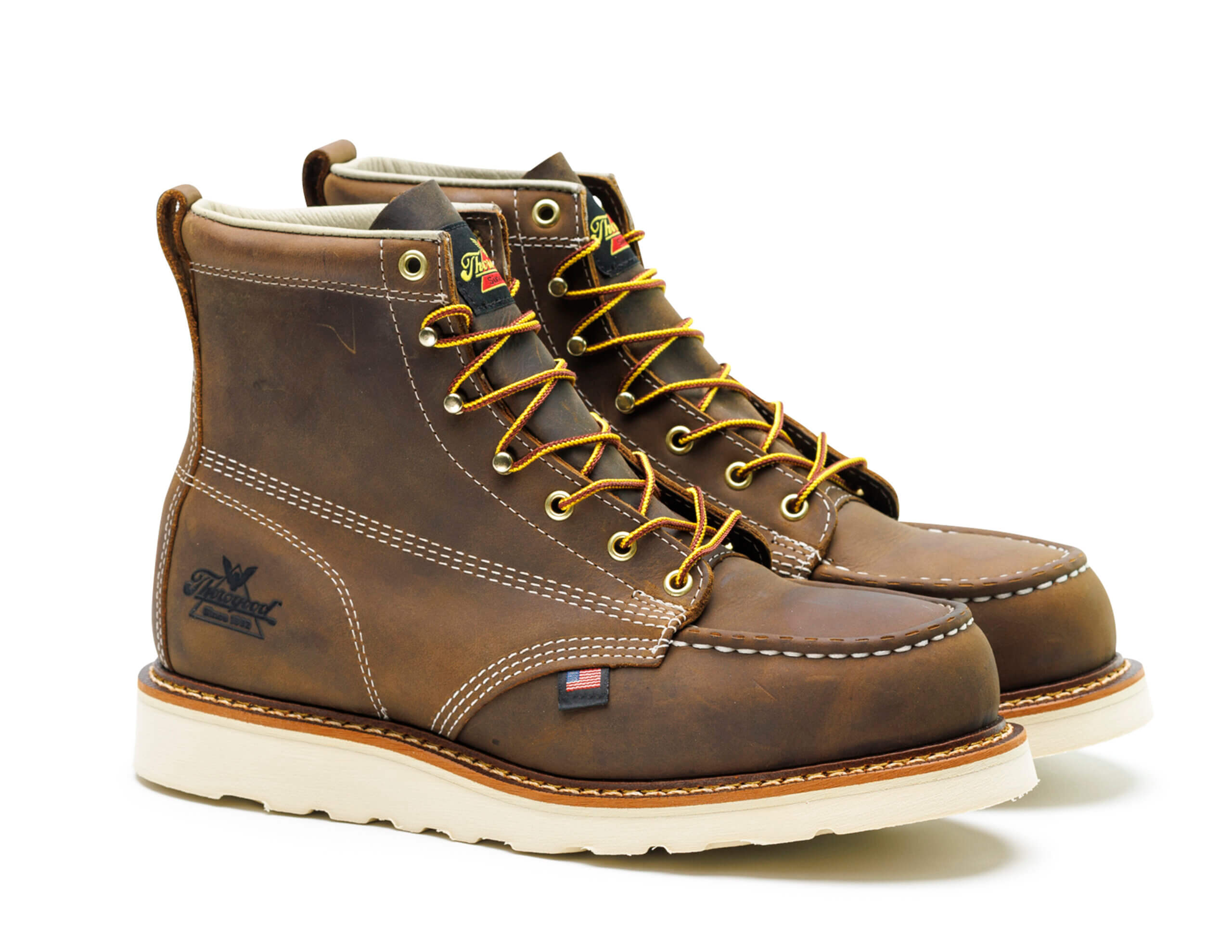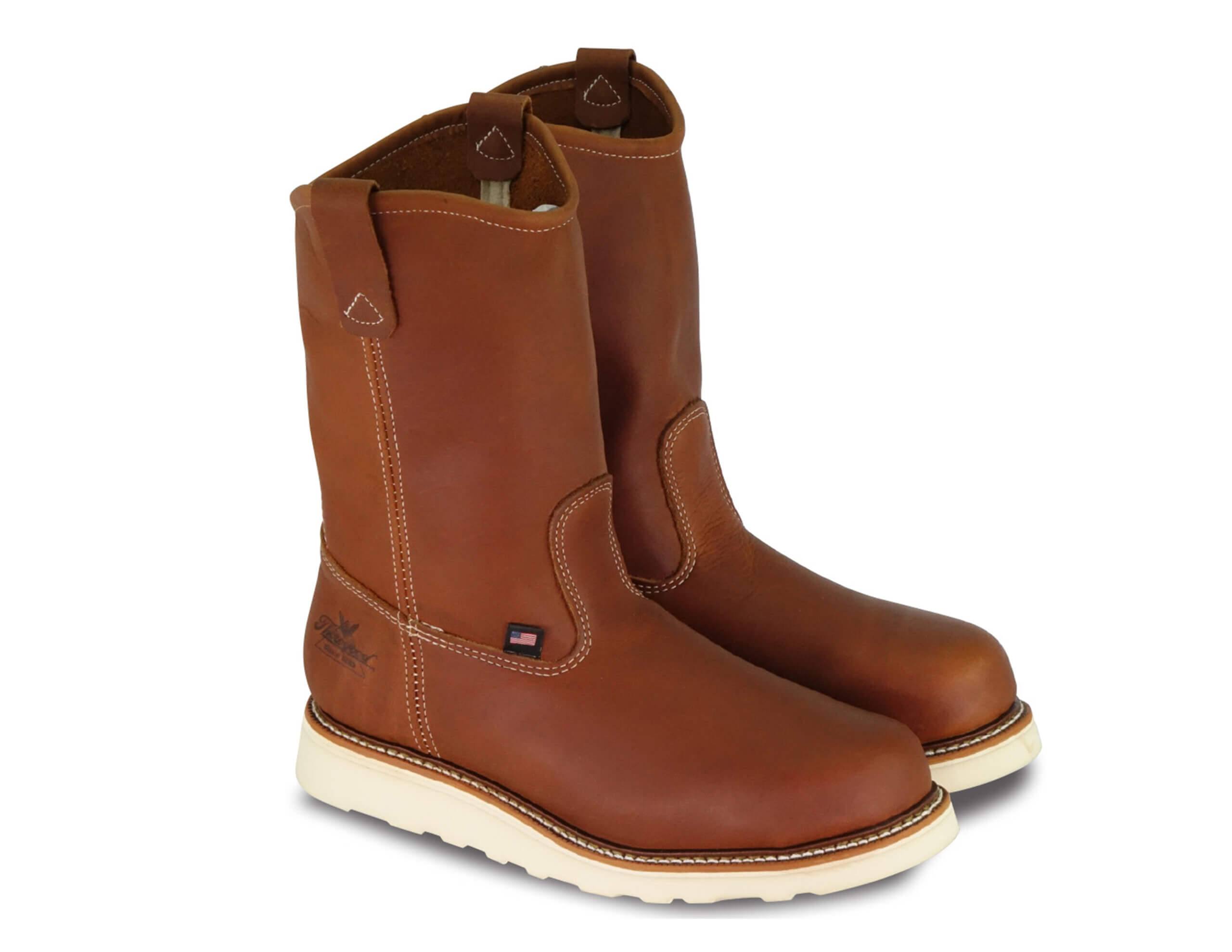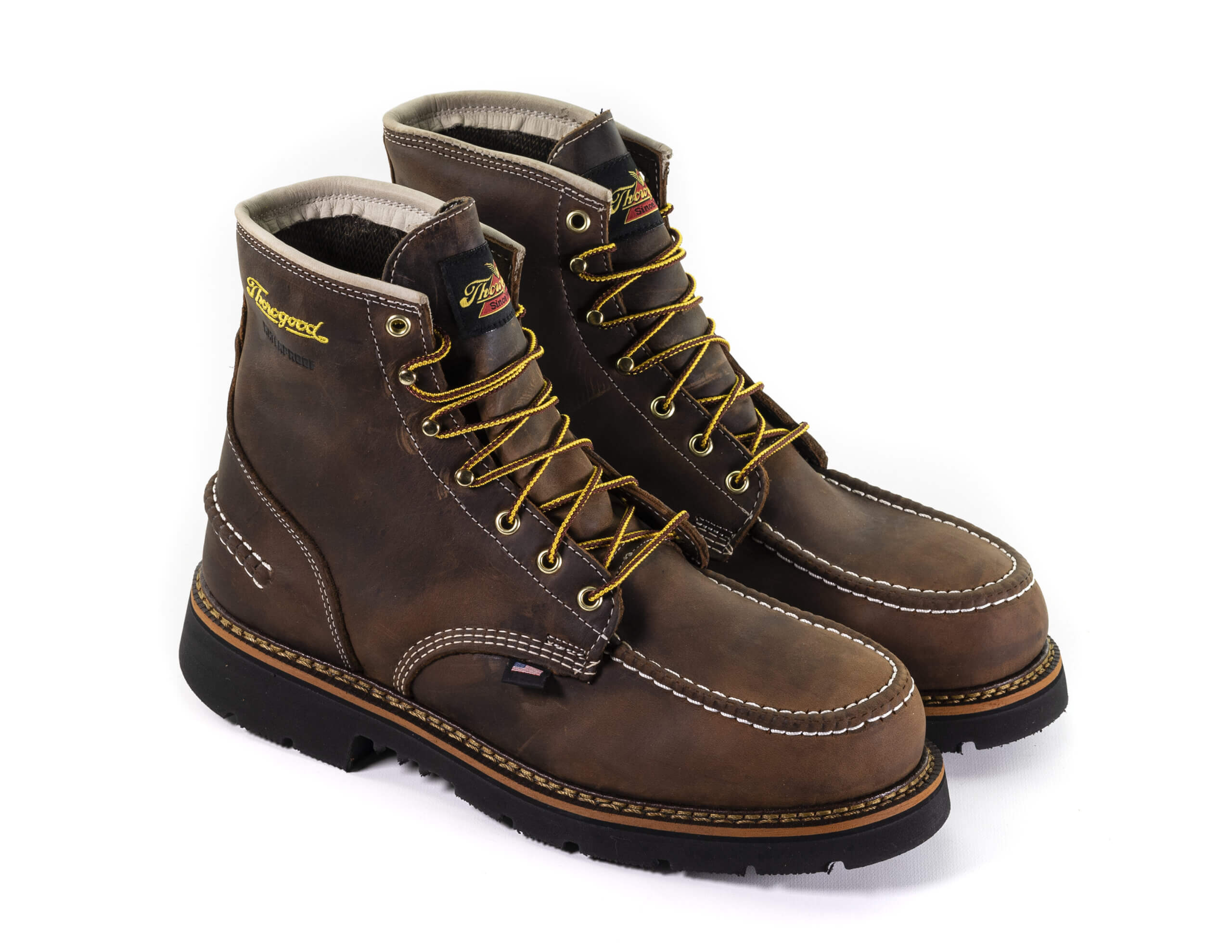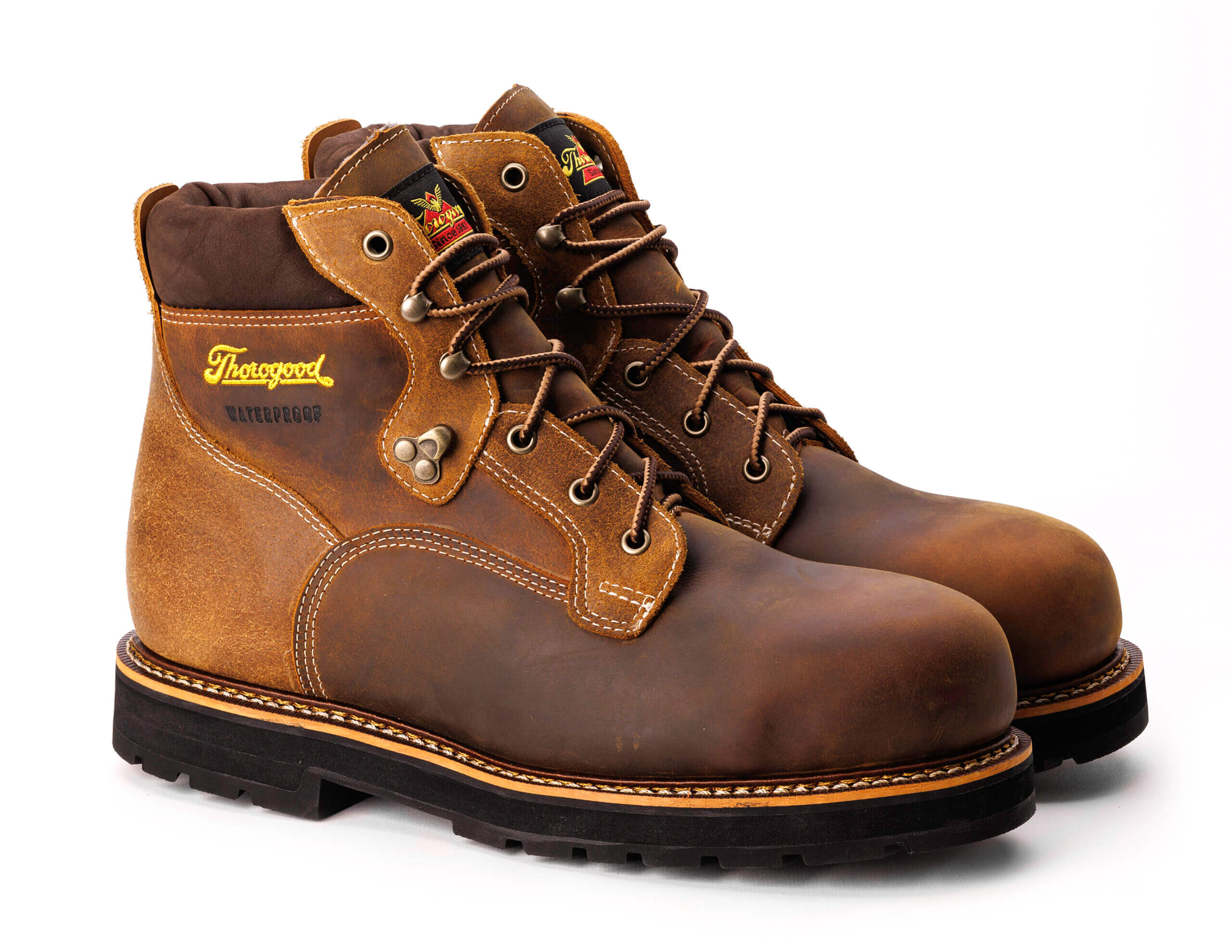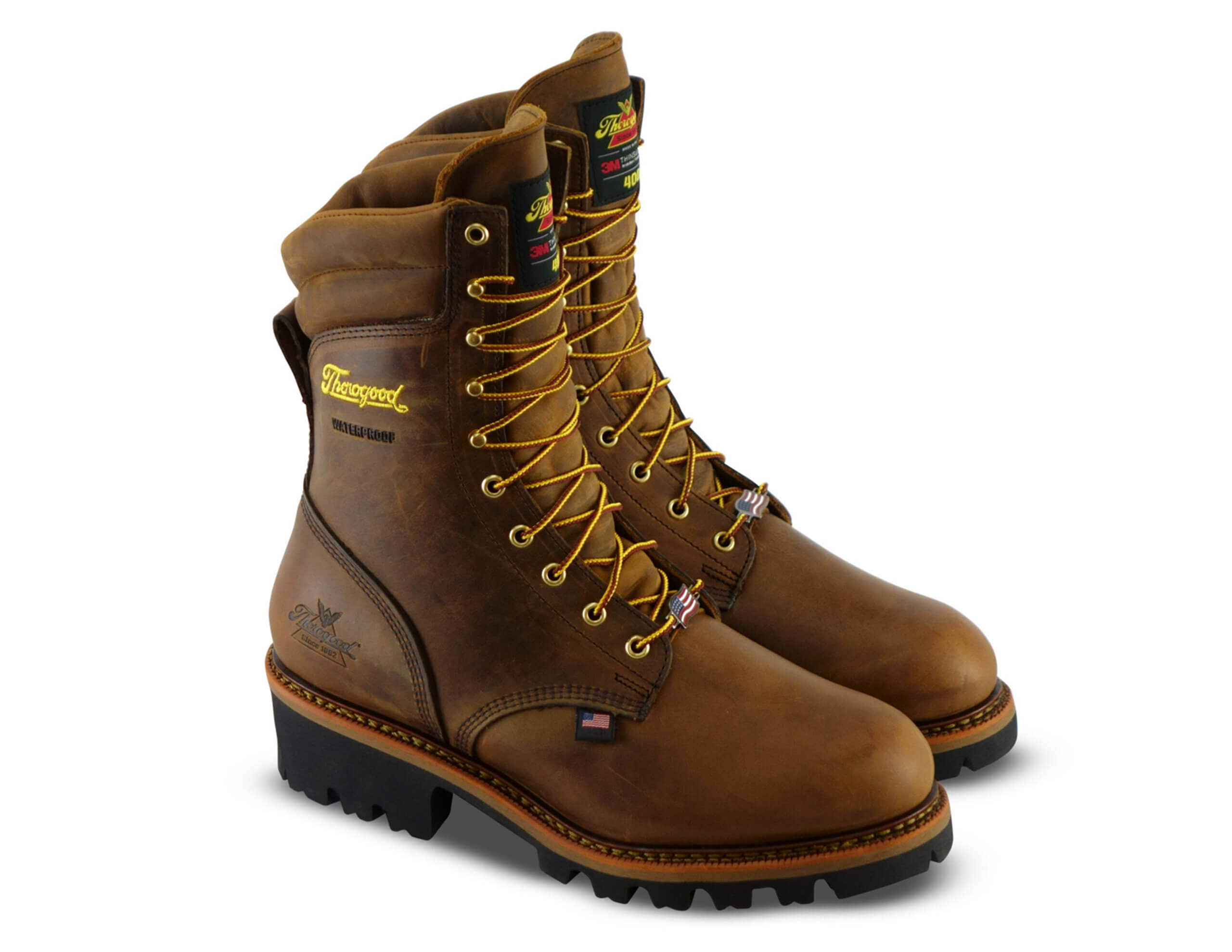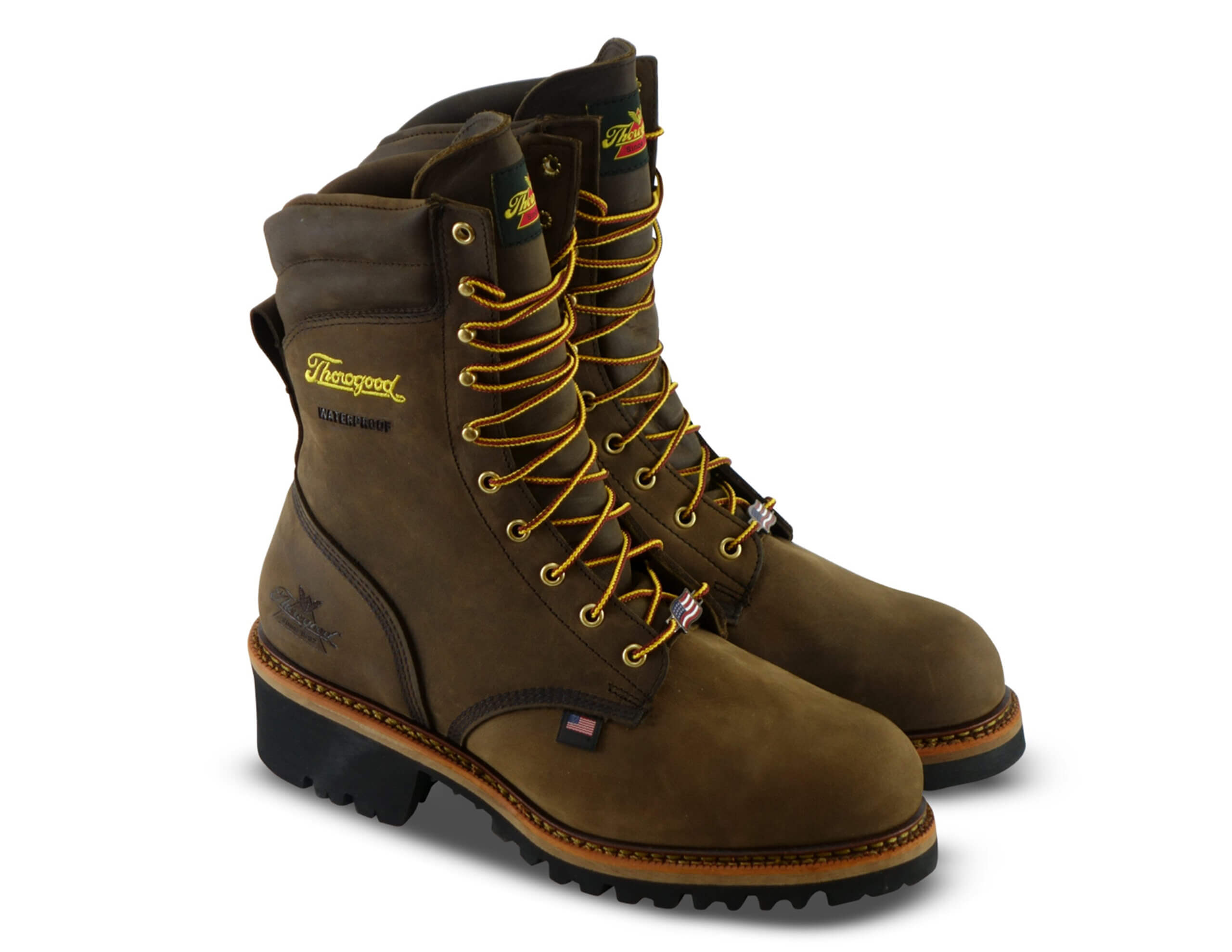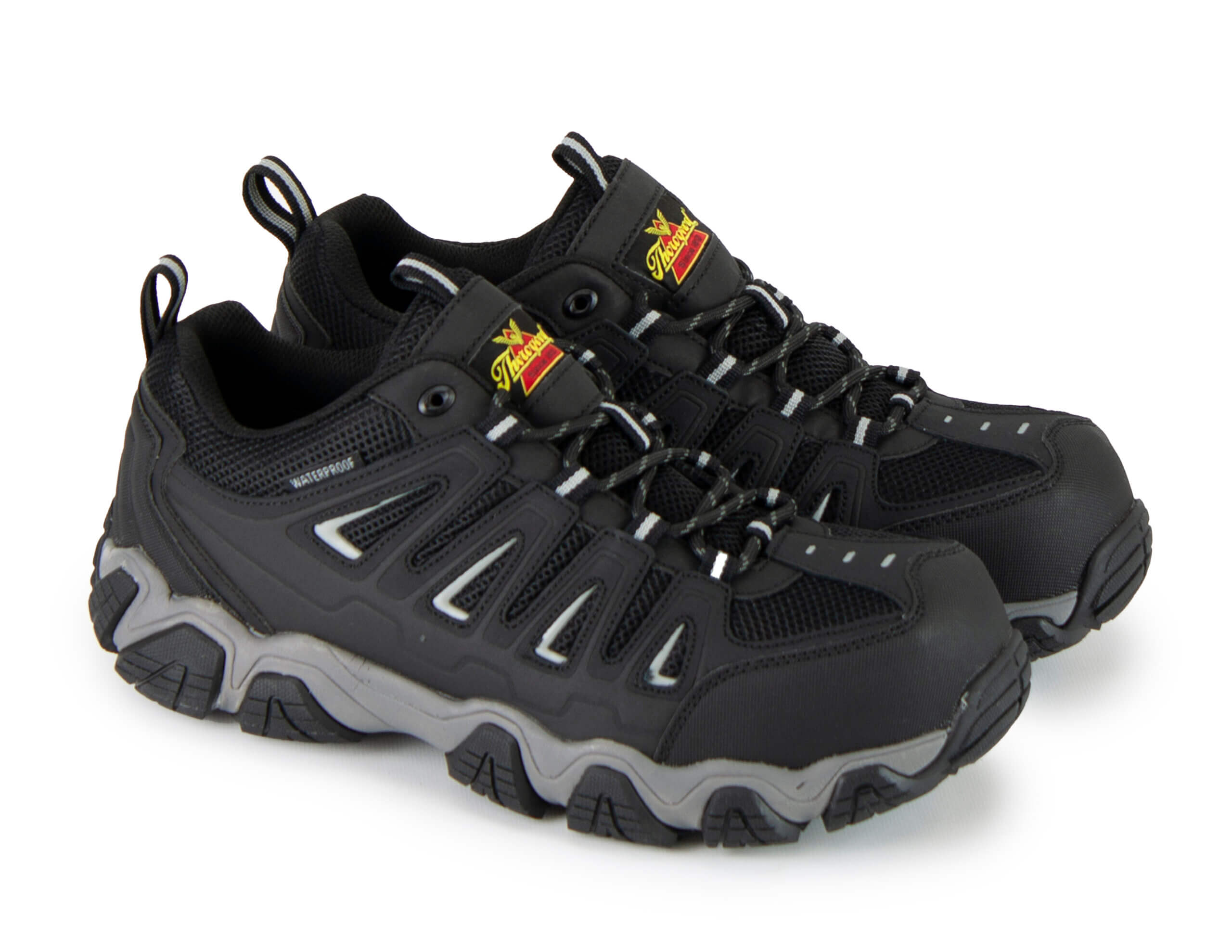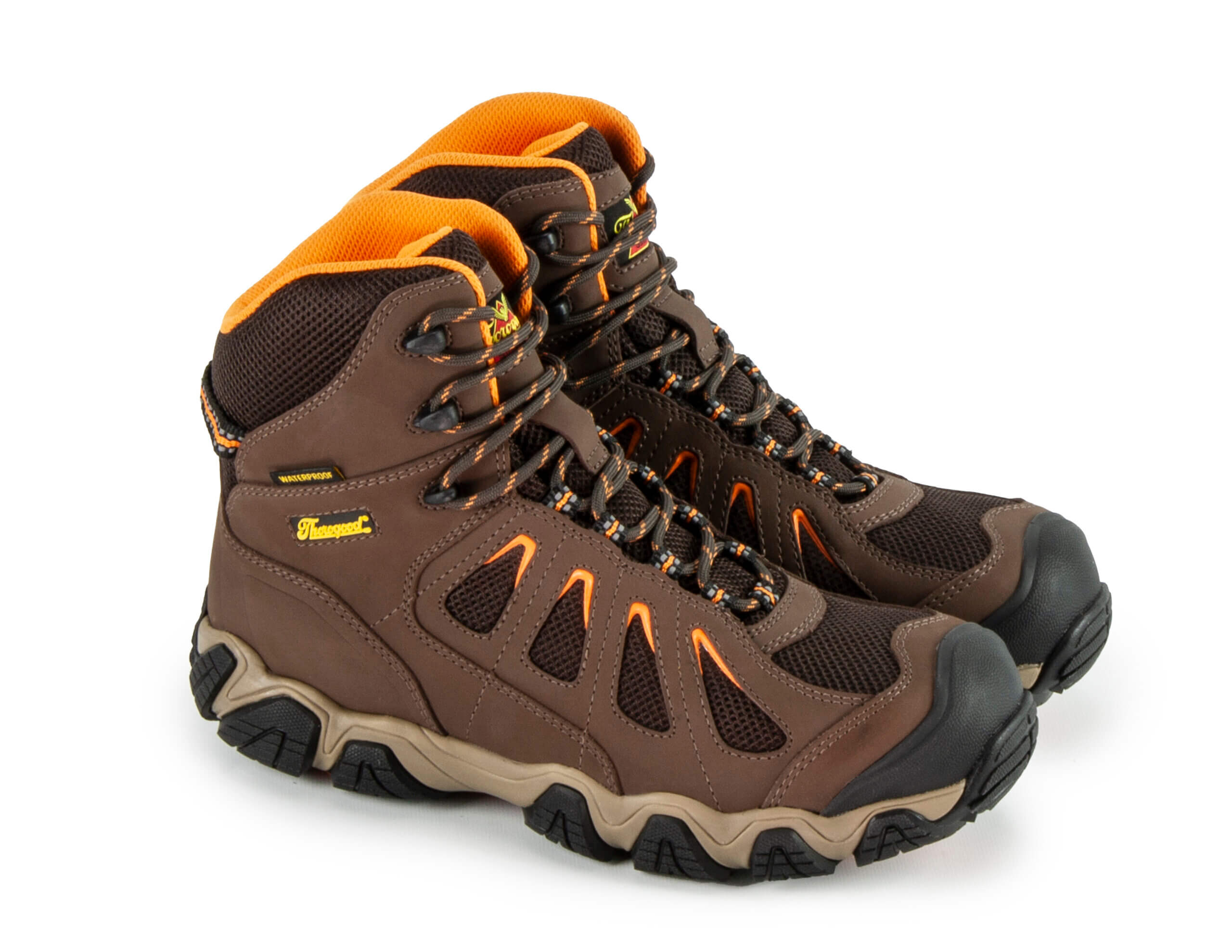When you're looking for work boots for a specific job, it can be tricky to sort through all the different features and options to find the right pair. A great place to start is at the bottom: different types of boot outsoles are designed for the needs of different environments. Learn all you need to know about wedge, 90-degree, logger, and hiker-style rubber outsoles to help you choose the right work boots for your job.
Wedge Outsoles
Wedge sole work boots have a flat-bottomed outsole made from one solid piece of material that runs the entire length of the shoe. They're designed for those who work primarily in environments with hard, flat surfaces – think warehouses, garages, and factories. Wedge outsoles are designed to be anti-slip and offer maximum contact with flooring or flat ground. They're also some of the most comfortable work footwear you can find; the flat sole distributes weight more evenly than those with a heel, and they're often paired with supportive insoles to give you an almost barefoot feel.
Wedge sole boots pros and cons
- Flexibility and support, especially on flat surfaces like concrete
- The even weight distribution makes wedge soles very comfortable for those working on their feet for hours at a time
- Shallow tread pattern doesn't hold onto dirt or rocks, making cleaning easier and bringing less mess into the house at the end of the day
- Although typically designed for slip and oil resistance, wedge soles are not ideal for work on rough terrain or for climbing ladders
Wedge outsoles make for some of the best boots for warehouse work, truckers, factory work, iron workers, roofers, mechanics, welders, and flat house workers.
Check out our favorite work shoes and boots for warehouse work.
90-degree Heel Work Boots
Work boots with a 90-degree heel are often paired with rugged tread patterns for maximum grip on rough, rocky, uneven, and wet terrain. Adding a heel can also provide more stability and balance, with the added benefit of helping to prevent you from sinking into the mud at the jobsite. These boots are typically built tough to withstand years of work outdoors, often including additional features like waterproofing, insulation, or safety toes. A 90-degree heel may be required by OSHA standards for certain jobs, especially if your work requires you to climb ladders frequently.
90-degree outsoles are some of the best boots for electricians, landscaping work, contractors, and outdoor construction workers.
Check out our tips for how to make and keep your work boots waterproof.
Logger Heel Work Boots
Logger outsoles are a unique style of heeled work boot that have a tall, hooked heel to give you even more traction and prevent slips on rough, uneven surfaces during logging work. These work boots typically have extreme rubber tread and exterior padding for additional grip.
The best boots for logging have a high heel, serious tread, and additional safety features to protect feet and ankles from impact.
Hiker-Style Rubber Outsoles
Though they may not be built like traditional work boots, hiker-style shoes and boots can be great for a variety of jobs. Rugged rubber outsoles, like those on our Crosstrex series, provide the best of both worlds when it comes to comfort and traction, especially on wet or rocky surfaces.
Hiker-style rubber outsoles provide traction and support, so they're also good candidates for outdoor work where you'll be walking on wet grass or mud, warehouse or factory work where you need slip and oil resistance, and some manufacturing jobs where you need static dissipative (SD) footwear.
If you're looking for advice for choosing uniform shoes and boots for professions like public safety, postal work, or firemen, visit our Uniform Boot Guide.

